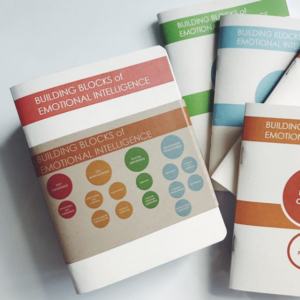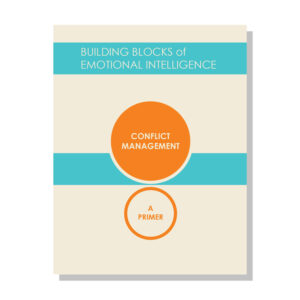

Attunement: The First Step in Inspirational Leadership
December 15, 2017 Time to read: 4 min.Carl sits in his office in front of his computer on Sunday night, deep in thought. Tomorrow he will introduce the strategic priority for the next year to his team, and he needs to inspire them. He has spent more time working on this presentation than most, revising for the most compelling language and the most striking visuals. He has practiced the presentation with his partner to improve his presence and capture just the right mood. He has and will put in many hours to prepare for this high stakes engagement. And yet, when he arrives in the conference room, Carl will not be able to shake a nagging worry: will this land with my team? Will it inspire them?
While there is plenty that Carl may be doing right in this scenario, he is missing at least one key ingredient of inspiration: connection to his team. Resonant leaders know that inspiration comes largely from connecting to what their teams care about. It takes strong social awareness to create this kind of connection, which Daniel Goleman describes as the ability to, “breathe life into the hopes and dreams of others.” He calls this attunement—a direct connection with people’s emotional centers.1
How to Become Attuned to Others
If I were coaching Carl, our team inspiration work would have started weeks earlier, and it wouldn’t have happened in front of his computer. Leaders who find themselves at a point of change or transition need to engage their teams early in the planning process. Jentz and Murphy’s “Embracing Confusion,” while written for new leaders, can be an excellent resource for any leader in need of becoming more attuned to their teams in times of change or challenge.2 In this piece the authors urge leaders to “hit the ground learning.” Jentz and Murphy lay out a process for systematically engaging stakeholders as experts in their experience of a team and a problem, forcing leaders to adopt a learner mindset and encouraging them to roll up their sleeves and engage their teams one-on-one as thought partners. Jentz and Murphy’s process ends with leaders engaging their teams in “sense-making.” In these conversations leaders share what they have learned and challenge their teams to grapple together with the complex, messy issues connected to their biggest challenges.
Coaching for Competencies and Attunement
Jentz and Murphy’s process is an exercise in building attunement. As Carl engages in it over time I would focus my coaching on raising his self-awareness and self-management, surfacing and managing his internal obstacles and personal strengths connected to empathic listening and collaborative problem solving. My goals would be the following:
1) Build Carl’s appreciation for the power of connecting through listening for the needs, hopes, dreams, aspirations and values of people.
2) Build his ability to get out of his leader persona and engage his team in healthy, unfiltered collaboration as part of a strategy-building process.
As Carl listens for why his people care and engages them as partners in their collective challenge, he will be able to meet his team at a place of common belief and aspiration. Simultaneously he will be building trust—another pre-requisite to true inspiration.
Connecting the Gaps
Engaging teams isn’t just about connecting, however. Strong leaders also engage to diagnose gaps between their teams are currently, and where their teams need to be to reach their potential. As Goleman writes, strong leaders “slow down to speed up” by engaging people in looking at the gaps.3 I would also be coaching Carl to explore his team’s gaps from both technical (logistics, skills and knowledge) and adaptive (relationships, emotions, and beliefs) perspectives by asking him two simple questions, over and over:
Where is your team right now, and where do they need to be to reach their potential?
Leaders are able to answer these questions accurately by adding the data that comes from person-to-person engagement to the rest of their diagnostic data. As a result, socially aware leaders attuned to their team’s gaps are most likely to meet their team’s needs, while also reaching big picture objectives. What is more inspiring than hearing your leader accurately name and go after your needs?
Flash forward now to Carl sitting at his desk after engaging deeply with his team. He no longer sits alone, attempting to pull his most inspiring ideas out of his head. He now sits with the hopes, dreams, fears, and shared problem-solving of his team. Their words surround him and inform his own hopes and dreams for the team’s new strategic priority. He is not worried about whether his people will be inspired by what he says, because he already knows that he will be speaking the same language when he stands in front of them. Because he is attuned, he will be able to meet the emotional needs of his team. In fact, that work—the work of inspiring—has mostly already been done. As he turns out the light he feels confident and calm knowing that the connection he has earned leading up to this moment is worth so much more than the very best words and sensational visuals.
Recommended Reading:
 Our new series of primers focus on the 12 Emotional and Social Intelligence Leadership Competencies, including Emotional Self-Awareness, Adaptability, Influence, Teamwork, and Inspirational Leadership.
Our new series of primers focus on the 12 Emotional and Social Intelligence Leadership Competencies, including Emotional Self-Awareness, Adaptability, Influence, Teamwork, and Inspirational Leadership.
The primers are written by Daniel Goleman and Richard Boyatzis, co-creators of the Emotional and Social Intelligence Leadership Competency Model, along with a range of colleagues, thought-leaders, researchers, and leaders with expertise in the various competencies – including the author of this article, Matthew Taylor.
See the full list of primers by topic, or get the complete collection!
Citation #1 and #3: Daniel Goleman, Richard Boyatzis and Annie McKee, (2002) Primal Leadership. (Boston, MA: Harvard Business School Publishing)
Citation #2: Barry Jentz and Jerome T. Murphy. “Starting Confused: How Leaders Start When They Don’t Know Where to Start” (Phi Delta Kappan, Vol. 86, No. 10, June 2005, pps. 736-744).







